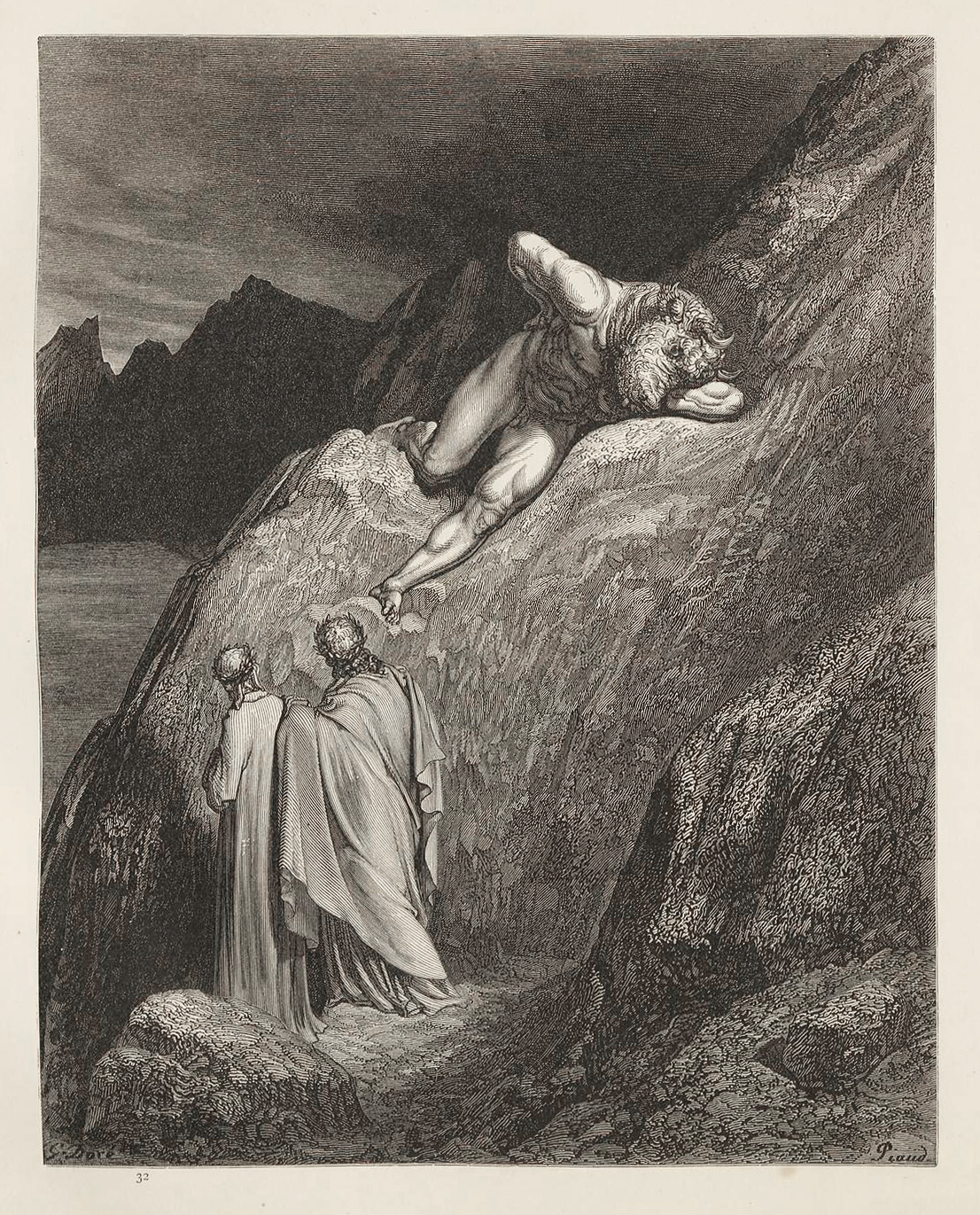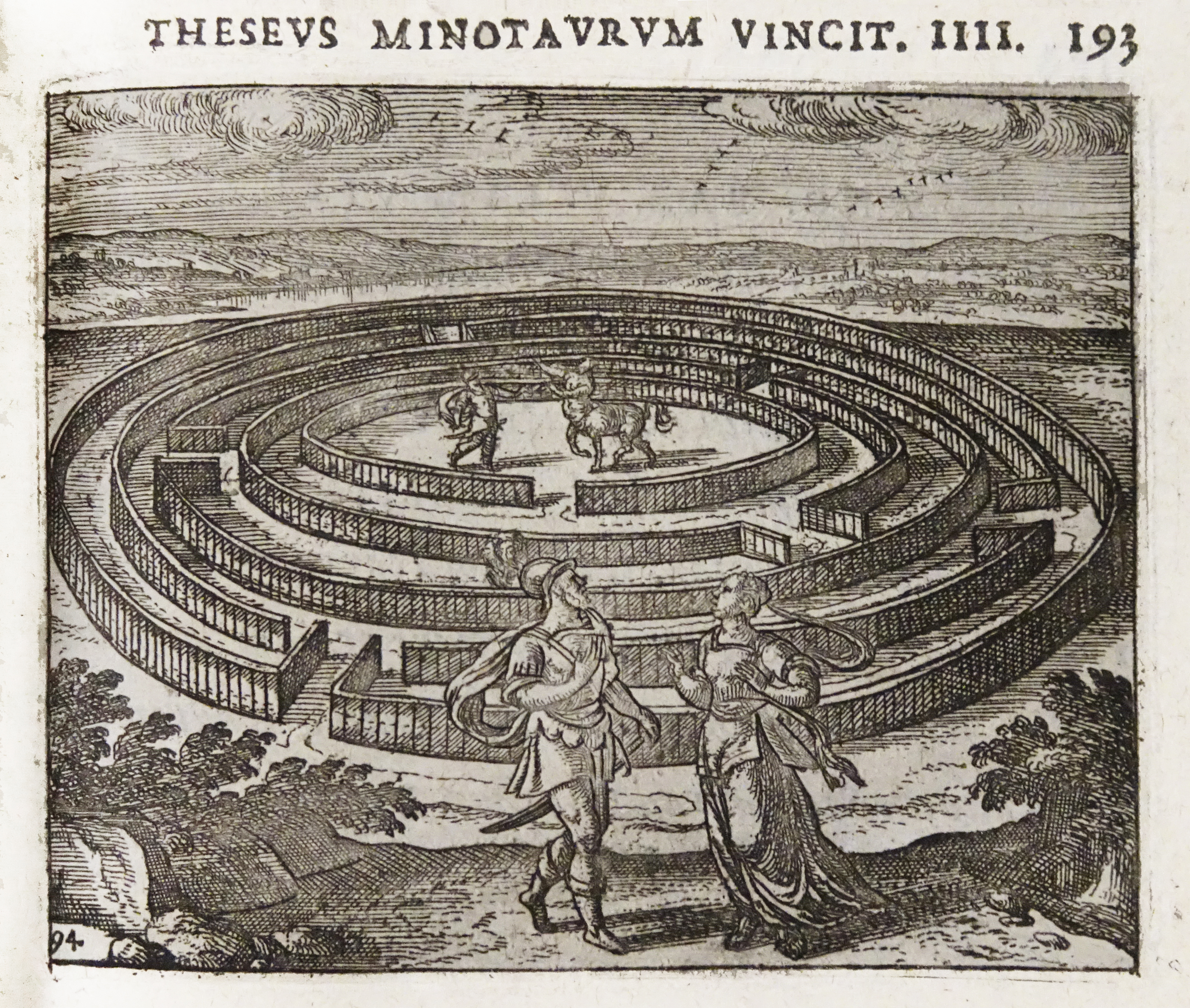Minotaur

In Canto XII of the Inferno, Virgil and Dante face the Minotaur. According to Apollodorus' Library, it was the illegitimate child of Pasiphaë - King Minos' of Crete's wife - and a sacred bull of Poseidon. The Divine Comedy therefore introduces it as 'the infamy of Crete' (Inferno, XII: 12). Minos trapped the creature in a labyrinth created by the inventor Daedelus, and fed it fourteen young men and women, delivered as tribute from Athens, every seven years.
The Minotaur is a representative of the Circle of Violence. Like the centaurs with whom it shares a Circle, as a hybrid creature its very existence is an act of violence against nature. The poem further emphasises this: Dante first sees it gnawing at it's own flesh in mindless rage, which Doré seeks to capture above - with perhaps limited success. While the Minotaur in his engraving is lent a sense of threat via its inhuman size and uncanny positioning, Doré appears to have struggled with conveying how a creature with a huge bovine head might bite itself.
A common subject of early Greek art, the Minotaur is usually depicted as an animalistic man with a bull's head and tail; some have argued that Dante intended the features to be reversed, though. This would not have been such an unusual approach - in his Art of Love Ovid merely describes the Minotaur as part man and part bull, without any specifics, and from time to time artists had interpreted this as they wished. This practice had survived well into the Renaissance: take for example Van der Borcht's 1591 illustration to the Metamorphoses below, in which the figure in the centre of the labyrinth clearly has a bull's body.

In the classical tradition Theseus, the son of Athenian king Aegeus, killed the Minotaur and fled the labyrinth by tying string to the doorpost so he could find his way out. Knowing it to be a being of uncontrolled wrath, Virgil taunts the Minotaur about Theseus; the beast becomes so distracted by its own anger that it allows Dante and Virgil to slip past.